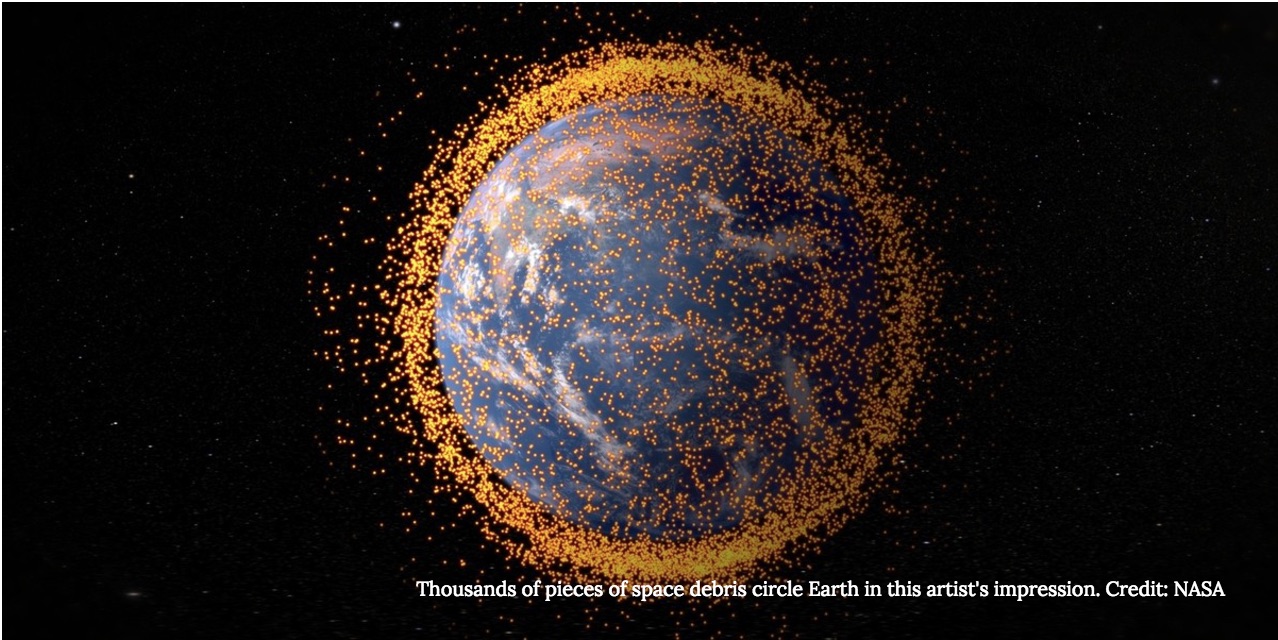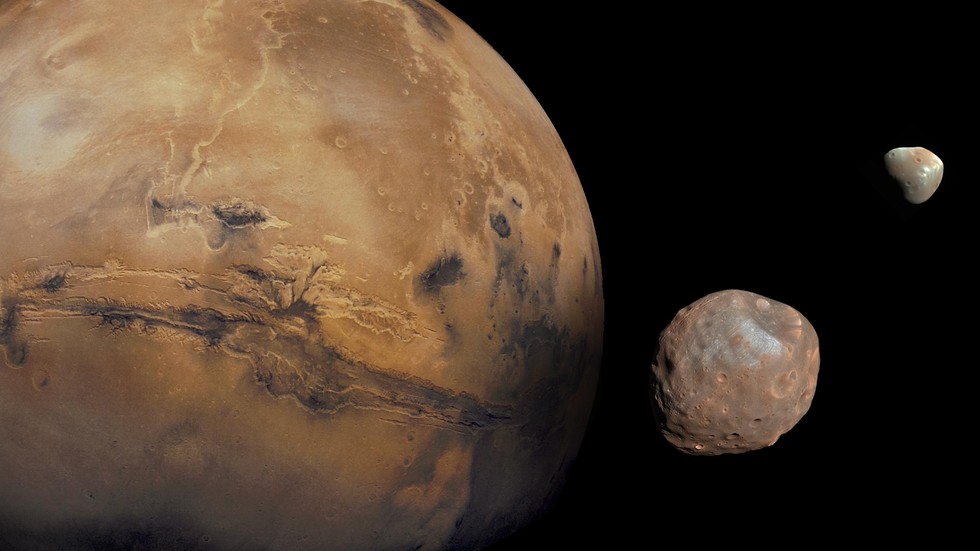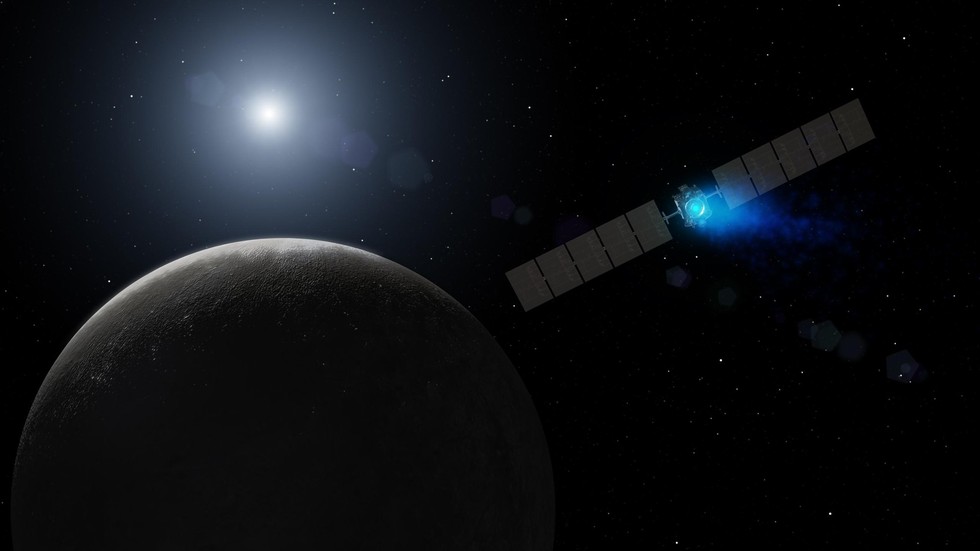Recycling Space Junk for Missions to Mars

One of our sadder legacies from nearly six decades of space exploration is a chain of orbital debris surrounding Earth. Some pieces are as small as flecks of paint, while others are the corpses of dead satellites long out of fuel.
NASA estimates that more than a half-million fragments are out there, occasionally posing threats to the International Space Station (ISS) or satellites. Collisions have happened before and will very likely happen again.
While space junk is a well-known problem, the ideas for dealing with it always run into one problem: economic support. That's why Tom Markusic, the CEO of space startup company Firefly Space Systems, proposes to recycle some of the dead space satellites for missions to Mars.
Upon realizing that nuts, bolts and electronics are all things that a Mars colony would need, Markusic proposes that spacecraft could tow the dead satellites out of Earth orbit using solar electric propelled tugs, to reduce fuel costs. These tugs would head over to Phobos, a moon of Mars, for humans to disassemble and use the raw materials. He estimates there are several hundred dead satellites he could use, already in space. As these space junk components are already in space, there's no launch costs associated with launching this material from the Earth's surface.
RELATED: An Orbital 'Pac-Man' to Chomp Through Space Junk?
"They could be reassembled and reconfigured into the types of hardware that our pathfinder missions, our human missions, will need out there at Mars," Markusic told Seeker. He compares it to dumping a bucket of Lego and reassembling it, and adds that the challenge of reassembly from existing diagrams could even be transformed to college competitions or other means to gain awareness.
The question, of course, is who would pay for such a scheme. Many companies have proposed dealing with the space junk, but as there's no jurisdiction and no immediate threat, there's always a problem with finding funds.
Breaking space news, the latest updates on rocket launches, skywatching events and more!
"The space junk problem is a bit like global warming — getting governments to agree to fund such activities is difficult," said Jason Forshaw, a research fellow at the University of Surrey who is on the United Kingdom's RemoveDEBRIS mission. Expected to launch next year from the ISS, it would test out harpoons, nets and sails to take out space debris.
"We are trying to raise awareness that space is part of the Earth's environment — space also needs cleaning and the longer we take to address this issue, the worse it will become," Forshaw said in an email to Seeker, suggesting perhaps an intergovernmental organization could take on the responsibility. With 7,000 tons of junk in space, Forshaw said he believes there is potential for many technologies to take them out.
RELATED: Meteor Over Western US Was Reentering Chinese Rocket
Markusic said he is confident government entities would be interested in paying to clean out the debris, if there is a good reason behind it. But before heading for Mars, he needs to raise funds for a rocket that would let his startup company enter the launch market. Called Firefly Alpha, it's supposed to launch light satellites (less than 1,000 kg) into space, with some CubeSats for third parties potentially riding along to gain more revenue.
His project is estimated at $100 million, and so far he's "raised and spent" about a third of that from venture capitalists and angels. A new Series A round for $25 million has stalled, however, as some of the parties dropped out last minute.
"The way I do things is I go very fast, so our burn rates are high. To have an interruption throws sand in the gears," Markusic said, adding he had to lay off half his staff while looking for other partners.
One thing in Markusic's favor is that most satellites have standard parts to which they once attached to a rocket. This means that even if a satellite was not designed to be towed out to Mars, as long as the towing spacecraft uses a similar attachment, it's possible to send it out. Another entity that plans to take advantage of these standard attachments is DARPA (Defense Advanced Research Projects Agency), the advanced research branch of the US Department of Defense.
DARPA's new Robotic Servicing of Geosynchronous Satellites (RSGS) program, which could fly as early as 2021, proposes four ways in which these dead satellites could be serviced with a robotic spacecraft. It could dock and do ultra-close inspection, push satellites into a different orbit, do repairs (such as untangling a snarled solar panel) or even attach new sensors to the satellite to breathe new life into it.
RELATED: Space Junk Reenters Atmosphere, Dazzles Las Vegas
DARPA is now soliciting a commercial partner to help it target satellites in geosynchronous orbit, which include 50 or 60 U.S. government satellites, said Gordon Roesler, a program manager at DARPA for RSGS. Once RSGS launches, he added, "there will be a six or nine month period where we rent or borrow a satellite from either a commercial operator or the government ... we'll do increasingly complex operations to not only test out all the software we have, and the components, but certify the operations team."
RSGS has taken over a portion of the Phoenix satellite program, which had satellite servicing as a part of it. Phoenix is no longer doing the servicing portion, but is focusing on other technologies. An example is the payload orbital delivery system, which is a detachable payload that could ride along on a geostationary satellite rocket launch and then kick off on its own. Phoenix testing will proceed in space in 2017.
Originally published on Seeker.

Elizabeth Howell (she/her), Ph.D., was a staff writer in the spaceflight channel between 2022 and 2024 specializing in Canadian space news. She was contributing writer for Space.com for 10 years from 2012 to 2024. Elizabeth's reporting includes multiple exclusives with the White House, leading world coverage about a lost-and-found space tomato on the International Space Station, witnessing five human spaceflight launches on two continents, flying parabolic, working inside a spacesuit, and participating in a simulated Mars mission. Her latest book, "Why Am I Taller?" (ECW Press, 2022) is co-written with astronaut Dave Williams.


